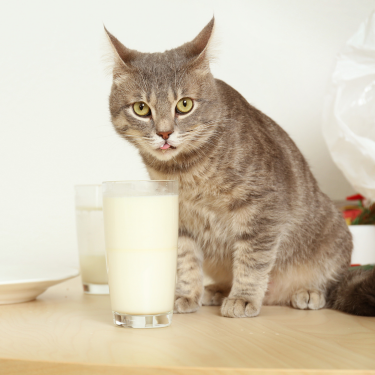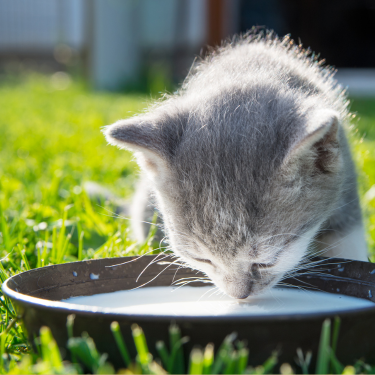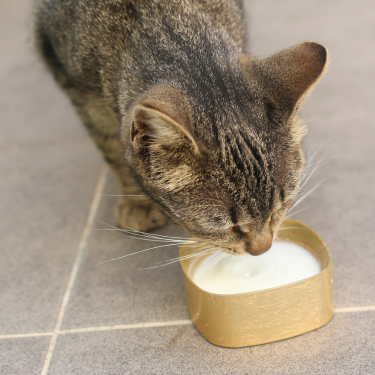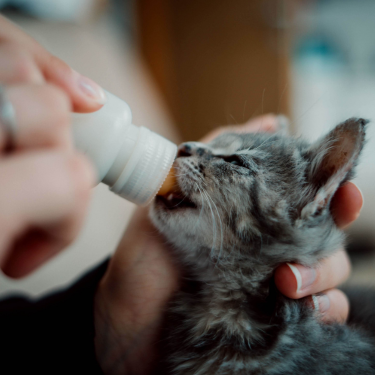What Do Cats Drink? Essential Tips for Keeping Your Cat Hydrated
Table of content
Cats should primarily drink water to stay hydrated. Contrary to popular belief, milk is not good for cats and should be avoided. Learn why milk is harmful to cats and explore healthier alternatives in our comprehensive guide.

What do cats drink? The image of a cat happily lapping up milk is so common that many people don’t question it. However, it might surprise you to learn that cow milk is actually detrimental to their health, regardless of how much they seem to enjoy it. Milk contains lactose, and most adult cats are lactose intolerant, making milk not good for them.
Ideally, a cat should drink only fresh water. A domestic cat needs proper hydration, especially if they consume dry food or have health issues like kidney disease. Some cats prefer other liquids and may not like the taste of water. To increase water intake, try using a water fountain or a clean water bowl. You can also encourage your feline friend by offering lactose free milk or even almond milk as a rare treat.
Kittens drink their mother’s milk, but once they transition to solid food, water is the best liquid for them. Cats may lap at milk, but it’s important to give your cat fresh water daily to ensure they stay hydrated. Read on for more tips on how to make sure your cat drinks enough water.
Can cats drink milk?
Is milk harmful for cats? Yes, most cats are lactose intolerant and consuming cow milk can lead to digestive issues like diarrhea and vomiting. While there are specially formulated cat milk options with reduced lactose, these should only be given sparingly. Kittens typically drink their mother’s milk for the first few weeks or a suitable 'kitten formula milk', but they are fully weaned by about 8-9 weeks of age.

Kittens have enzymes in their stomachs to digest lactose from their mother's milk, but adult cats lack this ability. As a result, milk can ferment in their stomachs, causing discomfort. It's crucial to provide fresh water daily for your adult cat, as they prefer clean water bowls or water fountains. If your cat doesn't like water, consider offering lactose-free alternatives like almond milk occasionally as a treat.
Understanding what liquids cats can safely consume is essential. While cats may lap at various liquids, ensuring they drink enough water is crucial for their health and hydration.
What do kittens drink?
Young kittens will nurse on their mother’s milk until they are weaned. It's essential to provide constant access to fresh water for both the mother cat and kittens, as kittens will also start to lap up water during this period.
Around 4 weeks of age, kittens begin to explore solid food and increase their water intake alongside nursing from their mother. This gradual transition prepares them for a diet beyond mother’s milk, ensuring they stay hydrated and healthy as they grow.
Why do cats like milk?
Cats are often drawn to the taste of milk due to its high fat content. Despite their preference, milk can lead to digestive issues such as vomiting or diarrhea in some cats. A balanced diet tailored for cats provides essential nutrients, making the extra fat from milk unnecessary.

If your cat consumes milk, observe them closely for any signs of digestive discomfort. It's crucial to offer fresh water daily to ensure proper hydration, especially if your cat prefers other liquids. Consider introducing lactose-free alternatives like almond milk as an occasional treat, but monitor their reaction carefully. If you notice any adverse symptoms, consult your veterinarian promptly for advice.
Can cats drink milk if they’re orphaned?
If you are hand rearing an orphaned kitten or if they are unable to nurse from their mother for any reason, it's crucial to feed them specialized 'kitten formula milk'. Regular milk from another species lacks the essential nutrients needed for proper kitten development and may not be well digested by cats.
The initial milk produced by a mother cat, known as colostrum, is rich in antibodies that help transfer immunity to her kittens. If a kitten cannot receive colostrum from its mother, it's important to consult your veterinarian for guidance to ensure they receive proper care and nutrition.

When should you start giving kittens water?
Around three to four weeks of age, kittens generally begin the process of weaning, which is when you should introduce them to solid food. During this time, it's also important to provide fresh, clean drinking water in a shallow bowl to encourage proper hydration as they transition from drinking milk.
What do cats drink?
Adult cats primarily require water as part of their balanced diet. How much they drink depends on several factors, including age, size, and whether they consume wet or dry food. You can find detailed information about your cat's hydration needs in our comprehensive guide.
If your cat has a health issue such as lactose intolerance or kidney disease, maintaining hydration becomes even more critical. If your cat doesn't drink enough fresh water, consider offering them plain chicken breast or white fish broth without salt or oil to entice them. You can also consult your vet about using oral rehydration fluids, which are often meat flavored and more appealing than plain water to some cats. Alternatively, a pet drinking fountain may be preferable to a traditional water bowl for your feline friend.
If you decide to give your cat 'cat milk' as a treat, ensure it complements their balanced diet and fits within their required cat nutrition plan.
Above all, ensure that fresh, clean water is accessible to your adult cat or weaned kitten at all times. It's essential for their health and well being.
How much should my cat be drinking?
The amount of water your cat drinks depends on factors like age, size, diet, and any health conditions they may have. For instance, cats eating dry food may need more water compared to those on wet food, which contains about 90% water. If you notice sudden changes in your cat's drinking habits, it's advisable to seek veterinary advice.
To encourage your cat to drink more, consider these tips:
- Use a wide bowl to allow your cat to drink comfortably without touching their whiskers.
- Opt for ceramic, metal, or glass bowls instead of plastic, which can affect the water's taste and deter your cat from drinking.
- Place the water bowl away from their food and litter box to create a more inviting drinking environment.
- Provide multiple water bowls in different locations around the house.
- Some cats prefer moving water, so consider using special bowls that keep water circulating or allow them access to running water from a tap (supervise to prevent accidents).
- Filtered water may appeal to cats sensitive to the chlorine in tap water.
- Ensure there are no shadows blocking your cat's view of the water's surface.
- If your cat likes drinking from your glasses, provide designated 'cats only' glasses around the house, ensuring they are stable and not easily knocked over.
Creating a conducive drinking environment can help ensure your cat stays properly hydrated for their overall health and well-being.
FAQ's
1. What liquids are safe for cats to drink?
- Apart from water, some cats may enjoy specially formulated cat milk or lactose-free alternatives like almond milk in moderation.
2. How much water should a cat drink daily?
- Cats typically need around 3.5-4.5 ounces of water per 5 pounds of body weight daily.
3. Can cats drink tap water?
- Cats may prefer running water because it's instinctual and may signify freshness. Consider a pet drinking fountain to encourage drinking.
4. How long can cats go without water?
- Cats typically cannot go without water for more than a few days. In ideal conditions, a healthy adult cat may survive about 3 to 4 days without water.
5. How can I encourage my cat to drink more water?
- The best advice I can offer is to open a can of tuna (preferably in spring water) and pour a small amount of the juice into a water bowl. Your kitty will likely enjoy drinking the tuna-flavored water.
6. How can I tell if my cat is dehydrated?
- Signs of dehydration in cats include dry gums, sunken eyes, lethargy, and reduced skin elasticity. Contact your vet if you suspect dehydration.
















